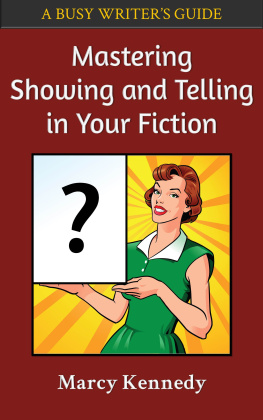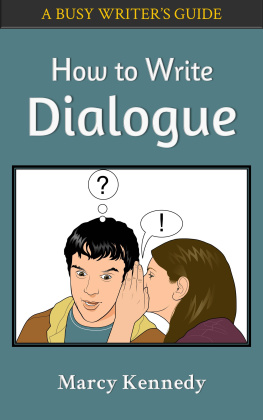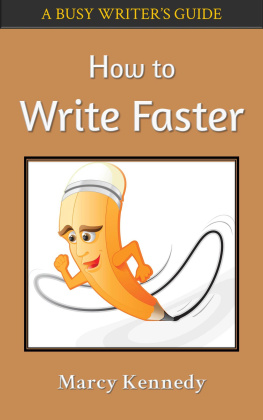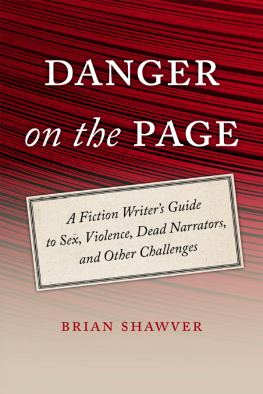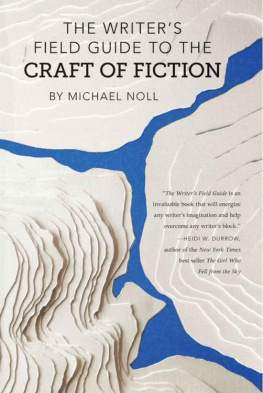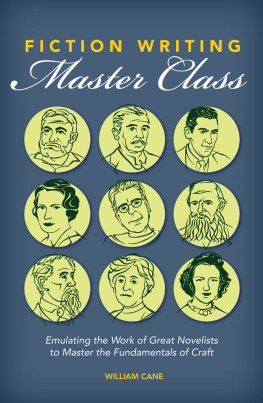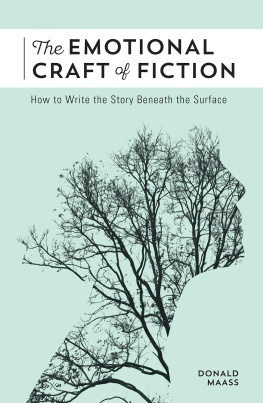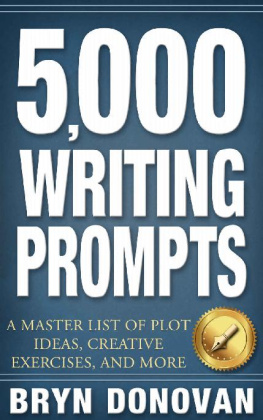Marcy Kennedy - Mastering Showing and Telling in Your Fiction
Here you can read online Marcy Kennedy - Mastering Showing and Telling in Your Fiction full text of the book (entire story) in english for free. Download pdf and epub, get meaning, cover and reviews about this ebook. year: 0, genre: Romance novel. Description of the work, (preface) as well as reviews are available. Best literature library LitArk.com created for fans of good reading and offers a wide selection of genres:
Romance novel
Science fiction
Adventure
Detective
Science
History
Home and family
Prose
Art
Politics
Computer
Non-fiction
Religion
Business
Children
Humor
Choose a favorite category and find really read worthwhile books. Enjoy immersion in the world of imagination, feel the emotions of the characters or learn something new for yourself, make an fascinating discovery.
- Book:Mastering Showing and Telling in Your Fiction
- Author:
- Genre:
- Year:0
- Rating:4 / 5
- Favourites:Add to favourites
- Your mark:
- 80
- 1
- 2
- 3
- 4
- 5
Mastering Showing and Telling in Your Fiction: summary, description and annotation
We offer to read an annotation, description, summary or preface (depends on what the author of the book "Mastering Showing and Telling in Your Fiction" wrote himself). If you haven't found the necessary information about the book — write in the comments, we will try to find it.
Mastering Showing and Telling in Your Fiction — read online for free the complete book (whole text) full work
Below is the text of the book, divided by pages. System saving the place of the last page read, allows you to conveniently read the book "Mastering Showing and Telling in Your Fiction" online for free, without having to search again every time where you left off. Put a bookmark, and you can go to the page where you finished reading at any time.
Font size:
Interval:
Bookmark:

A Busy Writer's Guide
Marcy Kennedy
Mastering Showing and Telling in Your Fiction: A Busy Writers Guide
First Edition
Copyright 2014 Marcy Kennedy
All rights reserved.
This e-book is licensed for your personal enjoyment only. No portion of this book may be reproduced or transmitted in any form or by any means, electronic or mechanical, including photocopying, recording, or by any information storage and retrieval system without written permission from the author, except for the inclusion of brief quotations in a review. This e-book may not be re-sold, as a used file or otherwise, and may not be given away to other people. Purchase and download is a one-time final use of this product. If youre reading this book and did not purchase it, or it was not purchased for your use only, then please purchase your own copy. Thank you for respecting the hard work of this author.
Editor: Christopher Saylor
Published March 2014 by Tongue Untied Communications
ISBN: 978-0-9920371-4-7
Every how-to-become-a-better-writer list includes studying craft. Years ago, as a new writer, I took that advice to heart but found that many craft books didnt give me the detailed, in-the-trenches coverage of a topic I needed. They included a lot of beautifully written prose and theory without explaining how to practically apply the principles, or they gave numerous examples but didnt explain how to replicate those concepts in my own work.
I ended up buying three or four books on the same topic to understand it fully and get the balance of theory and practice I was looking for. I spent more time studying craft than writing, and all the exercises in the books seemed to take me away from my story rather than helping me work directly on it. For the modern writer who also needs to blog and be on social media, who might be juggling a day job, and who still wants time to see their family or friends, thats a problem. Do you know anyone who doesnt have more commitments then theyre able to handle already without adding study the writing craft on top of it?
Were busy. Were tired. Were overworked. We love writing, but often wonder if its worth the sacrifices were making for it. We know were headed down the fast track to burning out, but dont know what we can do differently.
I wrote the Busy Writers Guide series to help you fast-track the learning process. I felt that writers needed a fluff-free guide that would give them the detailed coverage of a topic they required while also respecting their time. I want you to be able to spend the majority of your writing time actually writing, so that you can set aside your computer and enjoy the people and experiences that make life worth living.
Each Busy Writers Guide is intended to serve as an accelerated masters class in a topic. Ill give you enough theory so that you can understand why things work and why they dont, and enough examples to see how that theory looks in practice. Ill also provide tips and exercises to help you take it to the pages of your own story with an editors-eye view.
This Busy Writers Guide also includes special appendices. If you understand the concepts in the rest of the book, you can skip the appendices without feeling like youre missing something essential. Ive included them because I felt theyd be helpful for people who wanted a little extra help with a very tricky element of the writing craft.
My goal, as always, is for you to come away a stronger writer, with a stronger piece of work, than when you came in.
Youve heard the advice show, dont tell until you cant stand to hear it anymore. Yet all writers still seem to struggle with it.
I think there are three reasons for this.
The first is that this isnt an absolute rule. Telling isnt always wrong. It doesnt always lead to weak, flat writing. Showing vs. telling is all about balance.
The second is that we lack a clear way of understanding the difference between showing and telling.
The third is that were told show, dont tell , but were often left without practical ways to know how and when to do that, and how and when not to.
So thats what this book is about. Im going to give you ways to understand showing and telling, and Ill identify some practical ways to figure out when to change telling to showing and when to leave it as is.
Showing happens when we let the reader experience things for themselves, through the perspective of the characters. Jeff Gerke, former owner of Marcher Lord Press, explains showing in one simple question: Can the camera see it?
While I love that way of looking at it, wed really have to ask can the camera see it, hear it, smell it, touch it, taste it, or think it? (And that would be a strange camera.) Because of that, I prefer to think about showing as being in a Star Trek holodeck.
For those of you who arent as nerdy as I am, a holodeck is a virtual reality room where users can act as a character in a story, which is fully projected using photons and force fields. You can play Jane Eyre or Twilight s Bella or Lee Childs Jack Reacher.
What the user experiences is what they can see, hear, touch, taste, or smell. In holodecks, you can smell things and you can eat or drink replicated food. Its a completely immersive experience. To the holodeck user, the experience seems real in all respects. And if you turn the holodeck safety systems off, you can be injured or even die.
When youre faced with deciding whether something is showing or telling, ask yourself this question: If this were a holodeck program, would I be able to experience this?
Lets take a couple examples and test them out. A straightforward one first.
Kate realized shed locked her keys in the car.
Now, youre standing in the holodeck. What do you experience?
Nothing. We cant see realized. We dont know how she knows her keys are locked in the car. Anything we might visualize is something weve had to add because the author didnt. Theres no picture here.
Heres one possible showing version
Kate yanked on the car door handle. The door didnt budge, and her keys dangled from the ignition. Dang it!
You dont have to tell us Kate realized her keys were locked inside her car because were right there with her. We see her figure it out.
Lets take a more challenging example. This time youre in the holodeck, playing the character of Linda. (Remember that, since youre Linda, you can hear her thoughts, as well as see, smell, hear, taste, and feel what she does.)
First the telling version.
Linda stood at the edge of the Grand Canyon. Though her head spun from the height, she was amazed by the grandeur of it and felt a sense of excitement. Finally shed taken a big step toward overcoming her fear of heights.
What do you physically experience in the holodeck? Only the Grand Canyon. If you dont know what the Grand Canyon looks like, you cant see even that. None of the rest can appear around you. None of it is her thoughts. Theyre all abstractions. What does being amazed by the grandeur look like? What does excitement feel like? What does her fear of heights feel like?
If were in the holodeck, its going to play out something more like this
Linda gripped the damp metal railing that ringed the horseshoe-shaped walkway over the Grand Canyon. Her vision blurred, and she drew in a deep breath and puffed it out the way the instructor taught her in Lamaze class. If it worked for childbirth, it should work to keep her from passing out now. She forced her gaze down to the glass floor. Thick bands of rust red and tan alternated their way down canyon walls that looked as if theyd been chiseled by a giant sculptor. The shaking in her legs faded. She had to get a picture to take back to her kids.
Font size:
Interval:
Bookmark:
Similar books «Mastering Showing and Telling in Your Fiction»
Look at similar books to Mastering Showing and Telling in Your Fiction. We have selected literature similar in name and meaning in the hope of providing readers with more options to find new, interesting, not yet read works.
Discussion, reviews of the book Mastering Showing and Telling in Your Fiction and just readers' own opinions. Leave your comments, write what you think about the work, its meaning or the main characters. Specify what exactly you liked and what you didn't like, and why you think so.

